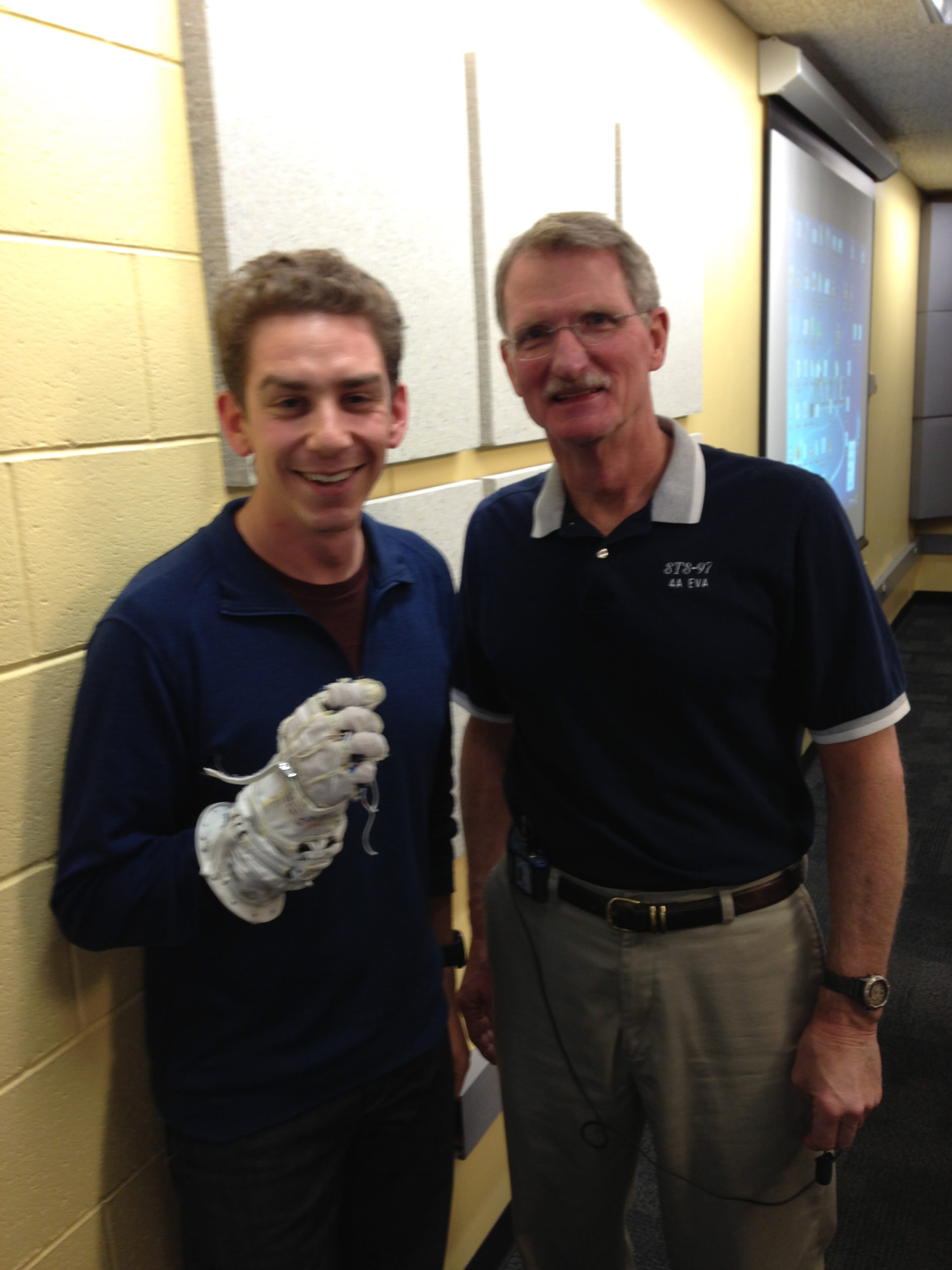This past week, my brother Jason and I were fortunate enough to be allowed to sit in on a guest lecture at the University of Colorado Engineering Center by NASA Astronaut Joe Tanner. Joe spoke to us about the ins and outs of spacesuit design, and shared a bunch of his personal stories. A pic or two, as well as my brief notes:
Space Habitat Design – ASEN 5158
Notes
- Main challenges of EMU – refurbishment of the suit after every flight.
- Now on ISS, suits left on station for a long time – like 6 months. modular components
- EMU – on extended EVA’s, it’s necessary to resupply suit halfway through – takes 5 minutes minutes to refil o2.
- Limiting consumable on EMU is the co2 scrubbing system
- After Ed White’s gemini EVA, training focus was switched to underwater training
- Apollo EVAs
- Umbilical based
- to pick up film from outside of module
- no cooling system
- Backpack – SOP – Secondary o2 pack
- Apollo Lunar walk SOP
- Very high center of gravity because of high location of SOP
- STS
- SAFER – cold gas jet mechanism for navigating in space.
- Suited Environments
- Launch, Entry and Abort – must be able to operate flight controls, as well as emergency depress/egress
- Orbital – shirts and shorts, unless on TV, then nasa wants the astronauts to wear long pants.
- Lunar/Mars – main concern is the dust – will eat the suit alive!
- NEO’s – Biggest problem is body stabilization
- Suit Functional Requirements
- Environmental control and live support parameters
- Maintain Pressure
- Remove co2
- Provide o2
- thermal control
- humidity control
- trace contaminant control
- mmod/radiation protection
- food/water
- water is space suit is tube with actual bite valve from Camelbak
- waste
- mobility/dexterity
- Environmental control and live support parameters
- ORLAN Russian Spacesuit
- In use for 40+ years, still in use today. Pressurized at 5.7 psi suit, which makes an easier transition from cabin to eva, but makes hand dexterity more difficult.
- Delta p Concerns
- Getting from cabin pressure to suit pressure – issues include decompression sickness, bends, etc
- Prevented by lowering cabin pressure, lowering N2 content in atmosphere, or lowering n2 content in human.
- Prebreathe protocol – facilitate equilibrium
- Zero prebreathe is at 8.3 psi
- Haldane’s Ratio – Defines cabin/suit pressure ration based on risk of DCS



